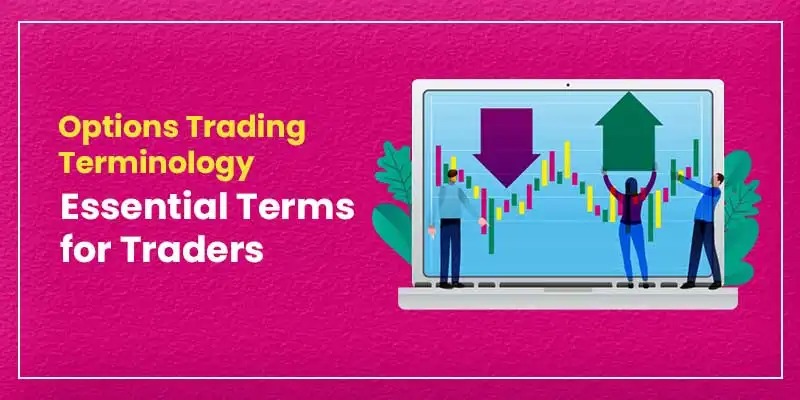Options are financial contracts that provide the right, but not the obligation, to buy or sell an underlying asset at a predetermined price before expiration. This guide explains essential terms in options trading to help traders better understand market mechanics and trading strategies.
Contents
- Option
- Call Option
- Put Option
- Underlying Asset
- Premium
- Strike Price
- Expiration Date
- Implied Volatility
- Option Greeks
- Option Chain
- Conclusion
- FAQs
Option
An option is a financial contract that grants the holder the right, but not the obligation, to buy or sell an underlying asset at a predetermined strike price before its expiration. Options are used for hedging, speculation, and portfolio management.
Also Read: What Are Index Funds And Why Are They Popular?
Call Option
A call option grants the holder the right, but not the obligation, to buy the underlying asset at a specified strike price before expiration. Traders typically use call options when anticipating an increase in the asset’s price.
Put Option
A put option grants the holder the right, but not the obligation, to sell the underlying asset at a specified strike price before expiration. Traders use put options when expecting a decline in the asset’s price.
Underlying Asset
The property upon which the option is based is the underlying asset. It could be a commodity, stock, index, or other financial instrument. The way an option does depends greatly on how its underlying asset does, so studying it before trading options is essential.
Premium
The premium is the price paid by the buyer to acquire an option. It is influenced by factors such as market volatility, time to expiration, and the underlying asset’s price. Understanding premiums is essential for assessing the cost and potential profitability of an options trade.
Strike Price
The strike price is the fixed price at which an option can be exercised, also called the exercise price. It establishes the buying or selling price of the asset and is thus crucial in calculating the intrinsic value of an option.
Also Read: 10 Essential Terms Every Options Trader Must Know
Expiration Date
The expiration date is the final day on which an option can be exercised. After this date, the option becomes invalid. Time decay (Theta) gradually reduces an option’s value as expiration nears, making it crucial for traders to manage their positions accordingly.
Implied Volatility
A security’s implied volatility is the degree to which investors anticipate price swings in the underlying asset. It is crucial for traders since it directly affects the option’s premium. Due to increasing uncertainty, premiums tend to rise when volatility rises.
Option Greeks
Traders can better comprehend the price sensitivity of an option by referring to the Option Greeks:
- Delta: It is a measure of the sensitivity of the option price to changes in the underlying asset’s price.
- Gamma: It determines how quickly Delta changes, which sheds light on how stable the option’s price sensitivity is.
- Theta: It is a measure of the value loss of an option as its expiration date draws near, depicting the temporal decay of the option.
- Vega: It shows how much the option’s value fluctuates in response to changes in the implied volatility.
Option Chain
An option chain is a detailed listing of all available option contracts for a specific underlying asset. It includes strike prices, premiums, expiration dates, and option moneyness. Traders use option chains to analyze market sentiment and identify potential trading opportunities.
Read Also: How Is The Premium Of An Options Contract Calculated
Conclusion
Understanding key options trading terminology is essential for traders to navigate the market effectively. By learning these fundamental concepts, traders can analyze options contracts more confidently and make informed decisions.
Disclaimer: Investments in the securities market are subject to market risks; read all the related documents carefully before investing.
FAQs
Higher liquidity ensures easier entry and exit from trades, while narrower bid-ask spreads reduce trading costs by minimizing the difference between buying and selling prices.
An option’s premium is influenced by factors such as time to expiration, implied volatility, intrinsic value, and the price movements of the underlying asset.
Indeed, traders also investigate iron condors and butterflies as ways to personalize risk and return profiles.

